- Home
- Pearl S. Buck
The Eternal Wonder
The Eternal Wonder Read online
THE
ETERNAL
WONDER
a novel
PEARL S. BUCK
CONTENTS
Foreword
Epigraph
Part I
Part II
A Biography of Pearl S. Buck
F O R E W O R D
This novel written by my mother, Pearl S. Buck, was one she had been creating in the years before her death at age eighty in Danby, Vermont, on March 6, 1973. Her personal affairs during the final years of her life were chaotic: She had become involved with individuals who targeted her fortune, estranging her from her family, friends, staff, and publishers. She was virtually bankrupt. Her seven adopted children, of whom I am one, did not have access to her property, and the handwritten manuscript and a typed copy of The Eternal Wonder were taken by someone and disappeared for forty years.
After her death my siblings and I mounted an effort to recover what was left of her literary and personal estate, and after a number of years, we were ultimately successful. I became Pearl Buck’s literary executor. However, before the family gained control of her estate, many items, such as her personal papers, letters, manuscripts, and property, vanished. The family was never informed of the existence of her last literary creation. In the years following her death the family recovered other items that had been taken. In 2007 the original manuscript of Pearl Buck’s most famous novel, The Good Earth, was recovered. It had been stolen and hidden by a former secretary at some point in the mid-1960s.
In December 2012 I learned that a woman in Texas had purchased the contents of a Fort Worth public storage unit. The rent on the unit had not been paid up to that point, and under the law the storage company was permitted to auction off the contents. When the purchaser examined the unit she found, among other items, what appeared to be an original handwritten Pearl Buck novel of some three-hundred-plus pages, along with a typewritten copy. The woman wished to sell the manuscripts, and after a negotiation, the family acquired them.
We do not know who took the manuscript from Danby, Vermont; when it was taken; or how it ended up in a storage unit in Fort Worth, Texas.
MY MOTHER WAS BORN to Absalom and Caroline Sydenstricker in Hillsboro, West Virginia, on June 26, 1892. Her father was a Presbyterian missionary who, with his wife, Caroline, had first gone to China in 1880. They were granted a home leave every ten years and it was on the first, somewhat extended, leave that Pearl was born. In November 1892, the family returned to China. Pearl would return to the United States with her parents in August 1901 for a home leave lasting until August 1902; again for her college years, from 1910 to 1914; and once more from 1925 to 1926 to take a Master of Arts degree at Cornell University. She did not move permanently to the United States until 1934. Thus, for most of the first forty years of her life her home was in China.
She knew the land, the people, and the culture intimately. In 1917 she married John Lossing Buck, an agricultural missionary whose work took him and Pearl to remote parts of China. It was there that Pearl developed a deep awareness of the life of Chinese farmers, their families and their culture. This knowledge was evident in The Good Earth. In 1921 the Bucks moved to Nanjing where both taught at the university.
Pearl knew from childhood that she wanted to be a writer. As a young girl some of her early writing appeared in the Shanghai Mercury, an English-language newspaper. As a student at Randolph-Macon Woman’s College she wrote stories and plays, won writing prizes, and was elected to Phi Beta Kappa.
In the late 1920s she wrote her first novel, East Wind: West Wind. She sent the book to a literary agent in New York City, who sent it to a number of publishers who rejected it, primarily because it was about China. Eventually, in 1929, the president of the John Day Company, Richard J. Walsh, accepted it, publishing it in 1930.
Walsh told her to keep writing. Her next book, published in 1932, was The Good Earth. This story was an instant bestseller and made her famous and financially comfortable. It also led to a romance with Richard Walsh, whom she married in 1935 after her divorce from Lossing Buck, and Walsh’s divorce from his first wife, Ruby. The literary partnership of editor-publisher Walsh and writer Buck was to be an enormously productive and successful one. Until his death in 1960 Walsh edited and published all of Buck’s books.
My adoptive parents, Pearl Buck and Richard Walsh, made their home in Bucks County, Pennsylvania. They also maintained an apartment in New York City, where the John Day Company was located. At the time of their marriage, Pearl had two children: Carol, her severely handicapped birth-child, and an adopted daughter, Janice. Walsh had three adult children from his first marriage who did not live with him.
With a new marriage and home, the Walshes decided to adopt more children. In early 1936 they adopted two baby boys, and fourteen months later an infant boy (me) and a girl. In the early 1950s they would adopt two adolescent girls. The family life was centered on what Pearl named Green Hills Farm, an estate of nearly five hundred acres that comprised a comfortably expanded former farmhouse for the family and several working farms that raised livestock and crops and were run by a manager and workers. At Green Hills Farm Pearl Buck would live and work from 1935 until she moved to Vermont for the last three years of her life.
In November 1938 Buck was awarded the Nobel Prize in Literature. Considered by many to be the highest accolade that a writer can receive, it was awarded for her body of work, which, up to that point, consisted of seven novels and two biographies, plus essays and articles. Many critics felt that Buck, at age forty-six, was too young, and that her work was not “literary” enough—too “readable” and “accessible.”
Despite the critics, the prize confirmed in Buck’s mind that she was an excellent writer, that the envious could be ignored, and that she would just sit down and do what she loved to do—write stories! When her life ended, her body of work consisted of forty-three novels, twenty-eight nonfiction books, 242 short stories, thirty-seven children’s books, eighteen scripts for film and television, several stage and musical plays, 580 articles and essays, and thousands of letters.
I WAS A YEAR AND A HALF OLD when my mother won the Nobel Prize. I don’t remember anything about the excitement my parents must have felt. The only souvenir I have of the event is a tattered postcard she sent me from Sweden after the prize ceremony.
Our home life at Green Hills Farm during the late 1930s and the 1940s was serene, private, and protected. The Japanese war, which had begun with the invasion of far-off Manchuria in September 1931—which was the precursor to Japan’s all-out war against the Chinese and, eventually, the United States—did not impinge on the quiet of rural Pennsylvania. When our country went to war with Japan and Germany in December 1941 those battles were far away. We did have to quit our holiday house on Island Beach, New Jersey, when ships were torpedoed just off the coast and fuel oil from sunken tankers blackened the beaches.
Far from the bombs and battlefields, Pearl Buck was a fierce advocate for military and humanitarian aid for the people and armies of China. Though her country was locked in a life-or-death struggle with the armies of the Japanese empire, she wrote often in her articles of the need to understand that the common people of Japan had been led into a disaster by criminal leaders. Today, in the twenty-first century, the government and people of China honor Pearl Buck for her China relief work during World War II. At the same time her books that are set in Japan speak to the humanity and culture of that nation’s decent people.
During my childhood the house was filled with books, as my father brought home the works of his other authors, and new books were sent to Pearl in hopes that she might write a promotional note in order to help a fellow writer’
s work. Fascinating men and women came to visit: Africans, Chinese, Europeans, and Indians. There were writers, intellectuals, diplomats, and the occasional politician. The visitors I remember best were the writer Lin Yutang, along with his wife and three beautiful daughters, and the famous watercolorist Chen Chi, who during his visits painted several pictures of our home. Frequent guests were the Indian ambassador to the United States, as well as Indian prime minister Nehru’s sister Vijaya Lakshmi Pandit and her daughters. Our neighbors included Oscar Hammerstein, James Michener, David Burpee, and the colony of artists and writers in nearby New Hope, Pennsylvania.
In a wing of our home, attached to the main house by a passageway with French doors, were three offices. There was one each for my parents and one for their secretaries. My mother’s office held her writing desk, a fireplace, and comfortable easy chairs, and it featured a large picture window that looked out over rose gardens and lily ponds and farm fields where our Guernsey cows grazed. There was a far view of a three-arched stone bridge that carried the public road.
In the quiet of rural Bucks County Pearl Buck wrote and wrote. After her trip to Sweden to receive the Nobel Prize in 1938 she did not travel outside the United States until the late 1950s. She ran her home and managed her staff and children with a firm hand. She did her creative writing for four hours every morning. In the afternoon she would answer fan mail and take care of business matters. She always had time to help her children with homework and piano lessons, and to exhort us to do our best work. Idleness was anathema. Her years in China, which exposed her to the poverty of most of that nation’s people in the late nineteenth and early twentieth centuries, instilled in her a belief that only through hard work could a person prosper.
ON JANUARY 4, 2013, the handwritten manuscript and typed copy of The Eternal Wonder were delivered to me. I opened the package from Texas. I looked at my mother’s familiar handwriting and compared her narrative to the typewritten manuscript. There was no doubt that they were genuine. When I did my first read-through of the novel, I knew that it was her work, but could see that the book was in need of editing. It was apparent that someone, I don’t know who, had made some changes when the handwritten document was typed. Whoever typed the original had misread some of the handwritten words, and my mother, writing with her usual speed, had made mistakes in timelines and transitions in various places. I felt that, had she lived longer, she would have changed parts and extended or altered the ending.
When Open Road Integrated Media, Pearl Buck’s ebook publisher and the publisher of this work, presented me with the initial copyedit, I reviewed it, and together we tried to smooth out the manuscript’s rough parts where we could, while changing as little as possible of the original work. My guiding principle was to try to stay true to what I know about my mother’s writing and my father’s editing.
As I read the book I was also amused to note a familiar device that my mother used in many of her books and stories. If she had an interesting experience or visited a special place, or met a fascinating person, she would toss the event, place, or person into one of her narratives. She would also use mundane details from her private life. At one point in this novel, Rann, the young man whose life we follow, is at home with his mother:
He put the dog in the garage and then came back to the kitchen and sat down at the table while his mother cooked something.
“Neither of us will be hungry,” she said, “but I’ll bake some gingerbread and make that special sweet sauce you like.”
My mother was famous for her homemade gingerbread and a special sweet sauce, and we children always loved and looked forward to it.
At another point in the book the teenage Rann travels by ship to England. On board he meets a beautiful, widowed, aristocratic older woman. When they arrive in England she invites him to stay at her castle outside London. In 1959 my mother and I were guests at a castle north of London. It is this castle that she describes in the book.
I believe that it is important to bring this work to the public, despite its flaws. When I took the manuscript to Jane Friedman, CEO of Open Road Integrated Media, she agreed that the book should be published. Jane’s team has worked extremely hard to ready it for release, and I am grateful to them all. I think my mother would be pleased.
But it is impossible to know just how Pearl Buck, had she lived, might have revised what is, as it stands, an imperfect work. She was a perfectionist and the work is far from perfect. She left no instructions as to how the novel should appear in its final form. Still, for her readers past and present this work presents a unique opportunity to really know her and to understand her feelings and beliefs. I lived in her house for almost twenty-five years. When I married and moved on, I was still in touch with her constantly until she died. So I was always aware of her broad interests outside of her life as a writer. She was a deeply committed advocate of women’s rights, civil rights for minority populations, the rights of the handicapped, the rights of mixed-race children and adults, and religious tolerance. Indeed, she always stood for the less fortunate of the world. As you read the novel you will see that, to use the title of her translation of a classic Chinese story, she believed that “all men are brothers.”
In a way, reading this story was like being at home again with my mother in her study, both of us at ease in chairs by the fire, while she shared her thoughts, knowledge, and opinions. The young genius who is the central character in this book could be considered an autobiographical figure, and the many characters who interact with and educate him speak as my mother would have spoken. Years after her death Pearl Buck still has a worldwide readership and her works continue to be translated into many languages. I think that in these pages Pearl Buck fans will find the kind of storytelling that they have always loved from my mother, and I hope they will experience some of the wonder that I did in reading it. Unless another hidden manuscript comes to light, this will stand as her final work.
Edgar Walsh
July 2013
Life is the wonder with which
we are all infused. …
P A R T I
He lay sleeping in still waters. This was not to say that his world was always motionless. There were times when he was aware of motion, even violent motion, in his universe. The warm fluid that enfolded him could rock him to and fro, could even toss him about, so that instinctively he spread his arms wide, his hands flailing, his legs spreading in the sprinting fashion of a frog. Not that he knew anything about frogs—it was too soon for that. It was too soon for him to know. Instinct was as yet his only tool. He was quiescent most of the time, active only when responding to unexpected movements in the outer universe.
These responses, necessary, his instinct told him, to protect himself, became also pleasurable. His instinct extended into positive action. He no longer waited for outer stimulus. Instead he felt it in himself. He began to move his arms and legs; he turned over, at first by accident but then with purpose and a sense of accomplishment. He could move from side to side in this warm private sea, and as he grew larger he became aware of its limitations. Now and again hand and foot struck a soft wall, but a definite wall beyond which he could not move. Back and forth, up and down, around and around, but not beyond—this was his limitation.
Instinct again worked in him to provide an impetus for more violent action. He was daily growing bigger and stronger, and as this became true his private sea grew smaller. Soon he would be too big for his environment. He felt this without knowing that he did. Moreover, he was impinged upon by dim, faraway sounds. Silence had been his surrounding, but now the two small appendages, one on either side of his head, seemed to contain echoes. These appendages had a purpose he could not understand because he could not think, and he could not think because he did not know anything. He could feel, however. He could receive a sensation. Sometimes he wanted to open his mouth to make a sound, but he did not know what a sound was, or even that he wan
ted to make it. He could not know anything—not yet. He did not even know that he could not know. Instinct was all he had. He was at the mercy of instinct because he knew nothing.
Instinct, nevertheless, guided him to a final awareness that he was too big for whatever it was that contained him. He felt uncomfortable, and this discomfort impelled him suddenly to rebel. Whatever he was in was too small for him and he wanted instinctively to be free of it. His instinct manifested itself in an increasing impatience. He flung out his arms and legs with such violence that one day the walls broke, and the waters rushed away, deserting him, leaving him helpless. At this moment, or thereabouts, for he still could not understand, since he did not know, he felt forces impelling him headfirst down an impassably narrow passage. He could never have made any progress except that he was wet and slimy. Inch by inch, contortions of some sort compelled him onward, downward, in darkness. Not that he knew anything about darkness, since he could know nothing. But he felt himself impelled by forces, pushing him onward. Or was he merely being rejected because he had grown too big? Impossible to know!
He continued his journey, forcing himself through the narrow passage, forcing its walls to widen. A new sort of fluid gushed out, carrying him on his way until suddenly, with such suddenness indeed that he seemed expelled, he emerged into infinite space. He was seized, although he did not know it, but he was seized by the head, though gently, lifted up to a great height—by what, he did not know since he could not—and then found himself dangling by his feet, his head down, all this happening so quickly that he did not know how to respond. Then at that instant, he felt on the soles of his feet something sharp, a new sensation. Suddenly he knew something. He knew pain. He flung out his arms. He did not know what to do with pain. He wanted to return to where he had always been in those safe, warm waters, but he did not know how to return. Yet he did not want to go on. He felt stifled, he felt helpless, he felt utterly alone, but he did not know what to do.

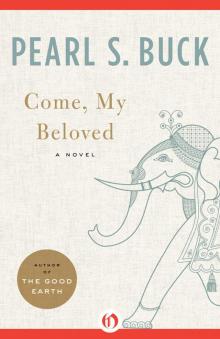 Come, My Beloved
Come, My Beloved The Big Wave
The Big Wave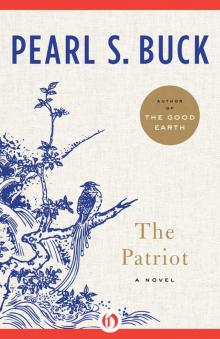 The Patriot
The Patriot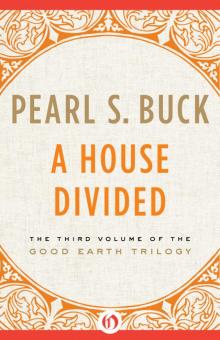 House Divided
House Divided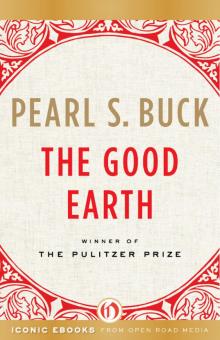 The Good Earth
The Good Earth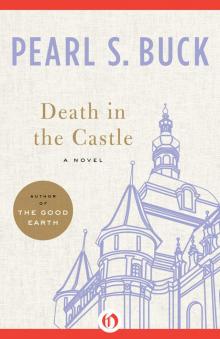 Death in the Castle
Death in the Castle The Eternal Wonder
The Eternal Wonder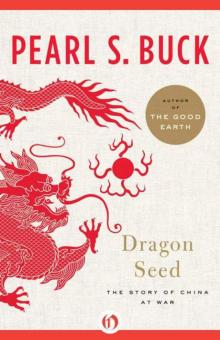 Dragon Seed: The Story of China at War
Dragon Seed: The Story of China at War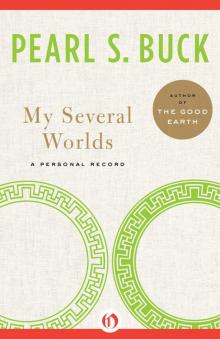 My Several Worlds: A Personal Record
My Several Worlds: A Personal Record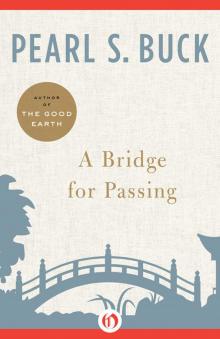 A Bridge for Passing: A Meditation on Love, Loss, and Faith
A Bridge for Passing: A Meditation on Love, Loss, and Faith Peony
Peony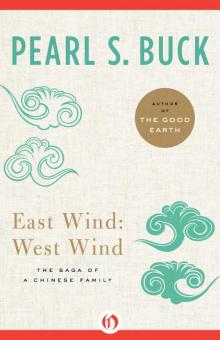 East Wind: West Wind: The Saga of a Chinese Family
East Wind: West Wind: The Saga of a Chinese Family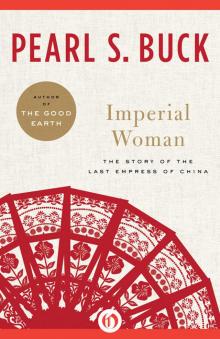 Imperial Woman
Imperial Woman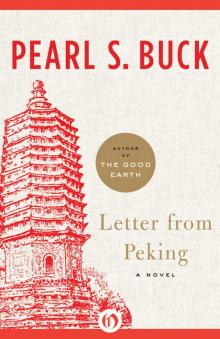 Letters From Peking
Letters From Peking Kinfolk
Kinfolk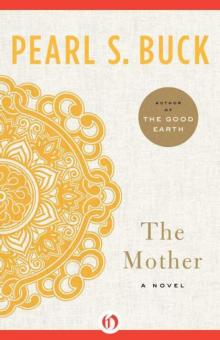 The Mother
The Mother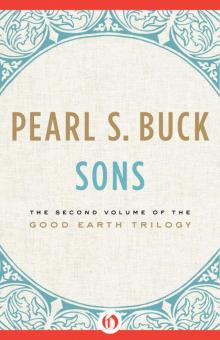 Sons
Sons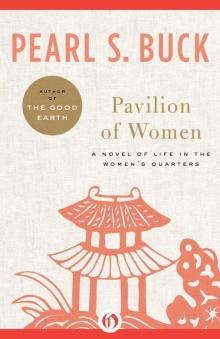 Pavilion of Women
Pavilion of Women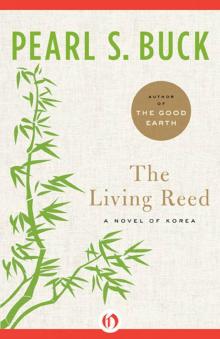 The Living Reed: A Novel of Korea
The Living Reed: A Novel of Korea The Big Wave: A Novel
The Big Wave: A Novel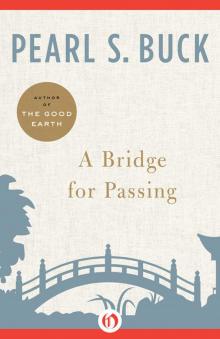 Bridge for Passing
Bridge for Passing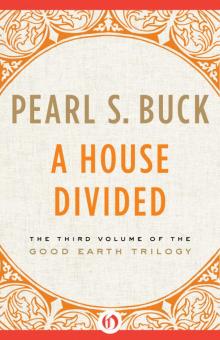 A House Divided
A House Divided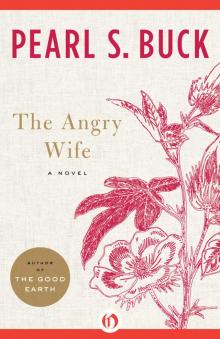 Angry Wife
Angry Wife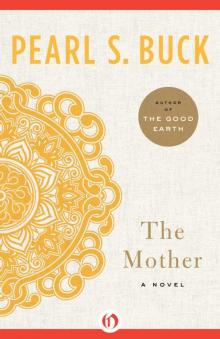 The Mother: A Novel
The Mother: A Novel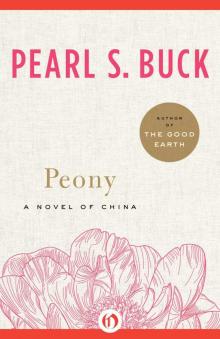 Peony: A Novel of China
Peony: A Novel of China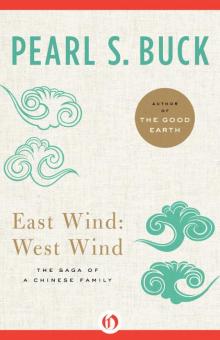 East Wind: West Wind
East Wind: West Wind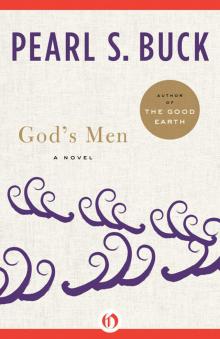 Gods Men
Gods Men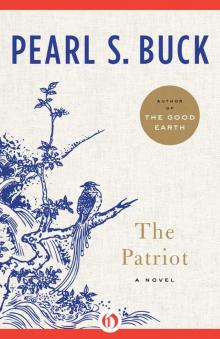 Patriot
Patriot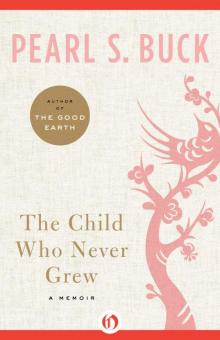 The Child Who Never Grew (nonfiction)
The Child Who Never Grew (nonfiction)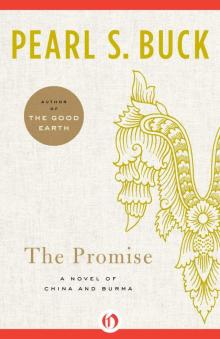 The Promise: A Novel of China and Burma (Oriental Novels of Pearl S. Buck)
The Promise: A Novel of China and Burma (Oriental Novels of Pearl S. Buck)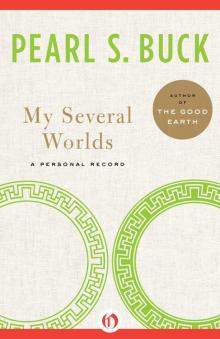 My Several Worlds
My Several Worlds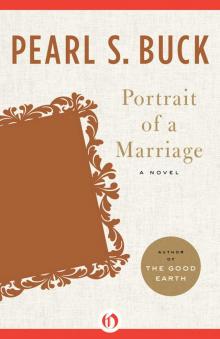 Portrait of a Marriage
Portrait of a Marriage The Goddess Abides: A Novel
The Goddess Abides: A Novel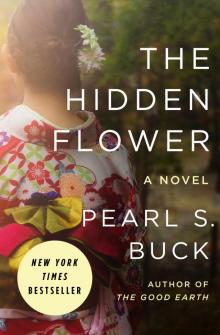 Hidden Flower
Hidden Flower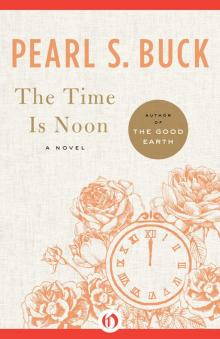 Time Is Noon
Time Is Noon